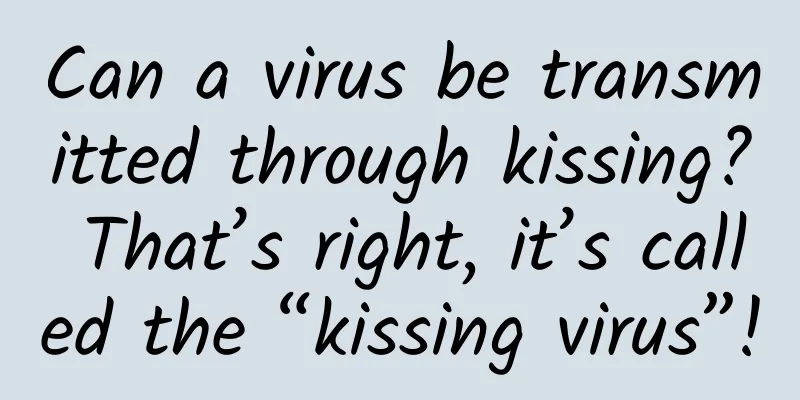Can a virus be transmitted through kissing? That’s right, it’s called the “kissing virus”!

|
It's a very common virus, one of the most common. Usually, it's benign -- it doesn't cause much trouble for people, but occasionally it can show its ugly head -- and it's linked to two human cancers. It's the Epstein-Barr virus (EBV), also known as the "kissing virus" because its transmission is linked to kissing (intimate oral contact) among young people. 01 Its close relatives, we are all familiar with them EBV may sound strange at first. But its close relatives are very familiar to us, such as the herpes simplex virus (HSV) that causes cold sores, and the varicella-zoster virus (VZV) that causes chickenpox or shingles. They are all herpes viruses. EBV can cause infectious mononucleosis. 02 Cancer it may cause There are two types of cancer that EBV may cause: Burkitt's lymphoma and nasopharyngeal carcinoma. EBV was first discovered by a surgeon working in Uganda in Burkitt's lymphoma cells. This tumor is common in children and adolescents, with the peak incidence between the ages of 5 and 7. The geographical distribution of this tumor is relatively limited, mainly concentrated in Africa where malaria is prevalent, with occasional sporadic cases in other parts of the world. The geographical distribution of nasopharyngeal cancer is also relatively limited, and the incidence rate is very high in some ethnic Chinese populations. Whether it is Cantonese living in China or Cantonese who have immigrated to other regions, the incidence rate is particularly high. The peak age for nasopharyngeal cancer is 45 to 55 years old, and the incidence rate in men is three times that in women. 03 Why is it called the kissing virus? Dr. Robert J. Hoagland published an article in the American Journal of Medical Science in 1955. He told a story about a patient with infectious mononucleosis who spent 12 hours with a female medical student on a train trip on December 23, 1950. The two kissed frequently (the kind that mixed their saliva). The key point is that the patient and the female student had never met before and had never seen each other again (only correspondence). Later, the patient's acquaintance on the train confirmed that the female student was actually a patient with infectious mononucleosis at a university hospital. The moral of this story is self-evident. Although EBV is closely related to the occurrence of the above two tumors, it cannot be confirmed that it is the only culprit. The occurrence of tumors may also be related to genetic, immune, environmental and other factors. As a relatively complex virus, EBV needs further research. |
>>: Bird population census: AI has started to check the bird population!
Recommend
The efficacy and function of Qinghui Yexiazhu
There are many common Chinese medicinal materials...
How to preserve dandelion?
Actually, dandelion is what we usually call dande...
Cough and phlegm? 99% of people drink cough syrup incorrectly!
Recently, respiratory diseases have been prevalen...
Clams, mussels, cockles, and cockles... Do you know all the shells in the vegetable market?
Audit expert: Li Weiyang Well-known science write...
If you are suddenly notified to be quarantined, what should you prepare? (Attached: Stocking list)
If you suddenly receive a notice of quarantine, y...
Jules Verne's novel predicted air warfare half a century in advance
Editor's Note Military science fiction has a ...
Beware of willow catkins during the Qingming Festival! Can catkins cause allergies?
"On the eve of the Qingming Festival, parts ...
The efficacy and function of birch bark
The medical value of birch bark is beyond our ima...
What diseases can Wuduoyun herbal medicine cure?
The five-cloud medicinal herb is Zeqi, which is u...
The efficacy and function of Pearl Wind
We are all familiar with pearl wind. Pearl wind i...
The efficacy and function of bitter forsythia
Forsythia suspensa is a kind of traditional Chine...
The efficacy and function of rabbit ear grass
Traditional Chinese medicine has a history of tho...
Standing on the shoulders of Shannon and Boltzmann, looking at the art and philosophy of deep learning
Standing on the shoulders of Shannon and Boltzman...
The efficacy and function of water shrimp grass
Chinese medicine has different effects on our bod...
The efficacy and function of Yangshan thorn
As people's living standards continue to impr...









